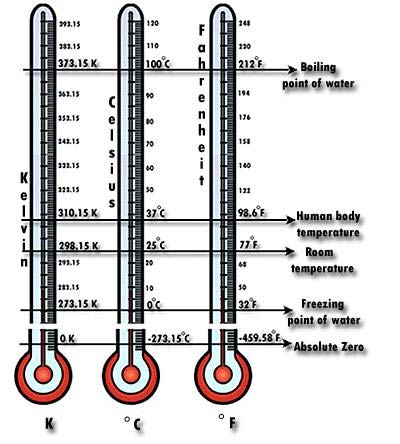Precise definition of temperature unit (Kelvin) thanks to laser spectroscopy techniques
French physicists have made a direct measurement of the Boltzmann constant by laser spectroscopy. This new technique involves observing the light absorption of ammonia (NH3) molecules, much less accurate than current methods to determine this constant. However, researchers are convinced that accuracy can be easily improved and this technique could help create a more precise new definition of temperature unit - the Kelvin scale.
Boltzmann's constant, kB , is a fundamental number of nature that links the kinetic energy of microscopic particle systems (such as gas molecules .) to their temperature. Therefore, it also creates a link between the microscopic world of atoms and molecules and the macroscopic properties of the system such as pressure . Moreover, there is only one technique available. It is possible to determine exactly this constant as a method of measuring sound velocity in Argon (Ar) gas, giving an accuracy of 2 parts per million (2ppm).
It is also possible to determine this constant from a number of other methods such as measuring noise in resistors, determining the dielectric constant of the gas, measuring radiation emitted by black objects . but equally for accuracy. much worse. Currently, there are many different techniques to identify kB but for different systematic errors and all have very important meanings for the International Committee for Weights and Measures (Paris). CIPM), is planning to redefine Kelvin temperature scale based on Boltzmann's constant (plan until 2011).

Figure 1. Principle diagram of measurement ( According to Phys. Rev. Lett. 98 250801 ).
Currently, 1 Kelvin is defined as 1 / 273.16 of the temperature difference between the absolute zero and the triple point of extremely pure water at a certain pressure. While the triple point technique can define 1 Kelvin with an accuracy of 1 part per million, the other complex problem that arises is that this definition is based on certain physical states that need to be reconstructed with a Kelvin definition with high precision required. However, CIPM wants to define Kelvin and other SI units on the basis of basic constants. And in the case of Kelvin, it is possible to obtain accurate results from the Boltzmann constant constants and seconds, which can give an accuracy of up to 1/1016.

Figure 2. Absorption spectra at different pressure values ( According to Phys. Rev. Lett. 98 250801 ).
Recently, Christian Chardonnet and colleagues of the Institut Galilee, University of Paris 13 affirmed that they developed laser spectroscopy techniques to create another way to measure Boltzmann constants with an accuracy of up to one millionth. This technique exploits the fact that the thermal motion of NH 3 molecules will blur the peaks in the optical absorption spectrum in a process called thermal spectral line expansion. The width of the spectral line extension is determined by the kB constant as well as the pressure and temperature of the gas and the frequency of absorbed light. By measuring the expanded line line width as a function of pressure at a specified temperature and frequency, the group of Chardonnet has determined the kB constant to an accuracy of 2 tenths of a thousand (namely 1, 38065 (26) .10-23 JK-1).
Although this is not the accuracy that CIPM wants, the researchers are confident that, in principle, this technique can be improved to give an accuracy of up to 1 part per million. In particular, the group intended to use temperature control processes more accurately in the experiment to achieve temperature stability of up to one part per million. At the same time, the group is also intending to increase the amount of NH 3 on the laser path and improve the stability of the laser to allow for more data to be collected in a short time (a way to reduce false number). The results just published in Phys. Rev. Lett. 98 250801.

It is time to redefine temperature units from basic constants (Photo: VatlyVietNam)
The Doctrine of Independence
According to PhysicsWeb.org & Physical Review Letters, Vietnamese Physics
- Is there a new definition of kg?
- Z-machine generates hot plasma gas with a record temperature of more than 2 billion Kelvin
- Official: 1 kilogram is no longer 1 kilogram, and so are 3 other basic quantities
- Laser technology heals new wounds
- Glasses against laser
- Vietnam's first laser engraving machine
- Rain by laser
- The US Navy equipped a laser gun that destroyed super accurately
- The laser is capable of heating up to 15 million degrees Celsius
- Laser: From the movie 'Star Wars' comes true
- How many laser pens are needed to make killer weapons?
- Laser 1000W laser gun has been born, 10 times stronger than standard
 Daily use inventions come from universities
Daily use inventions come from universities Special weight loss device helps prevent appetite
Special weight loss device helps prevent appetite 8 inventors were killed by their own inventions
8 inventors were killed by their own inventions Iran invented a motor car powered by water
Iran invented a motor car powered by water